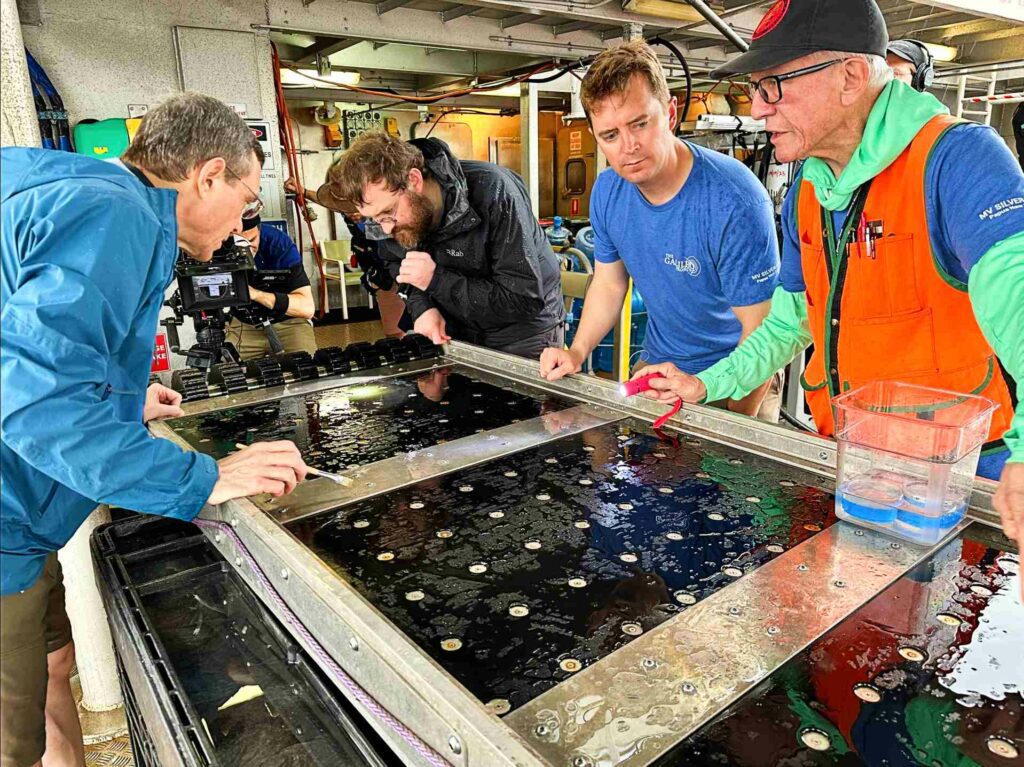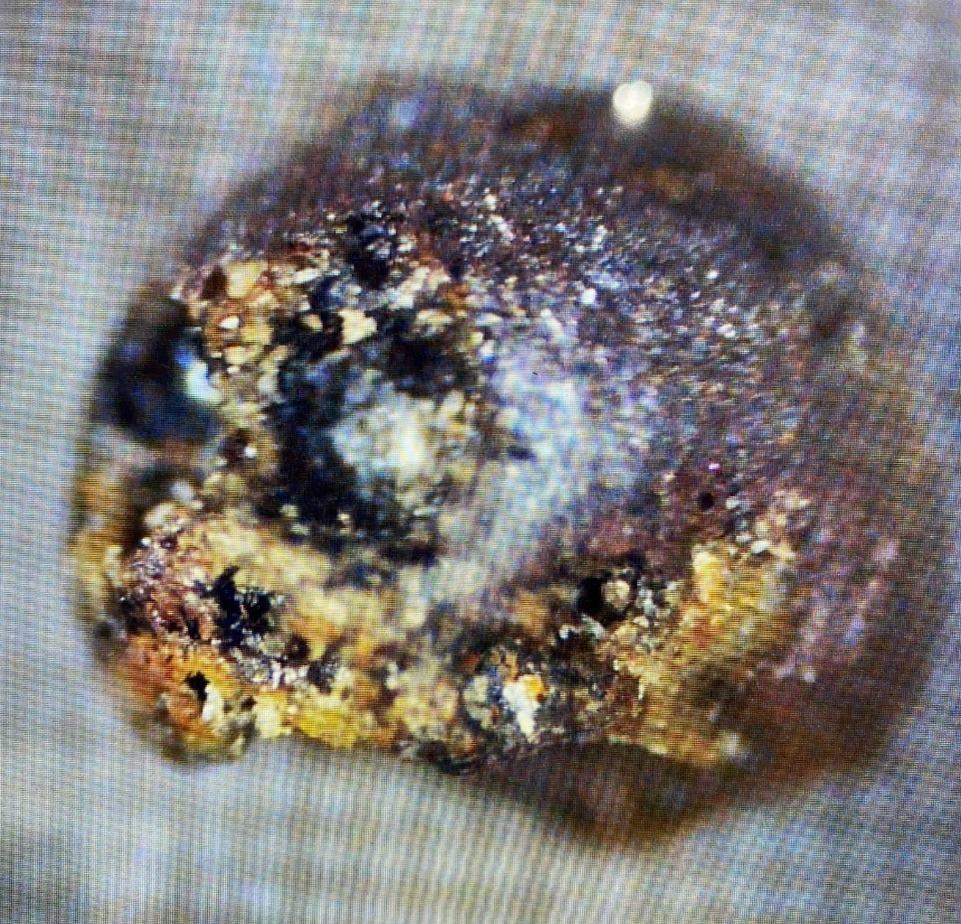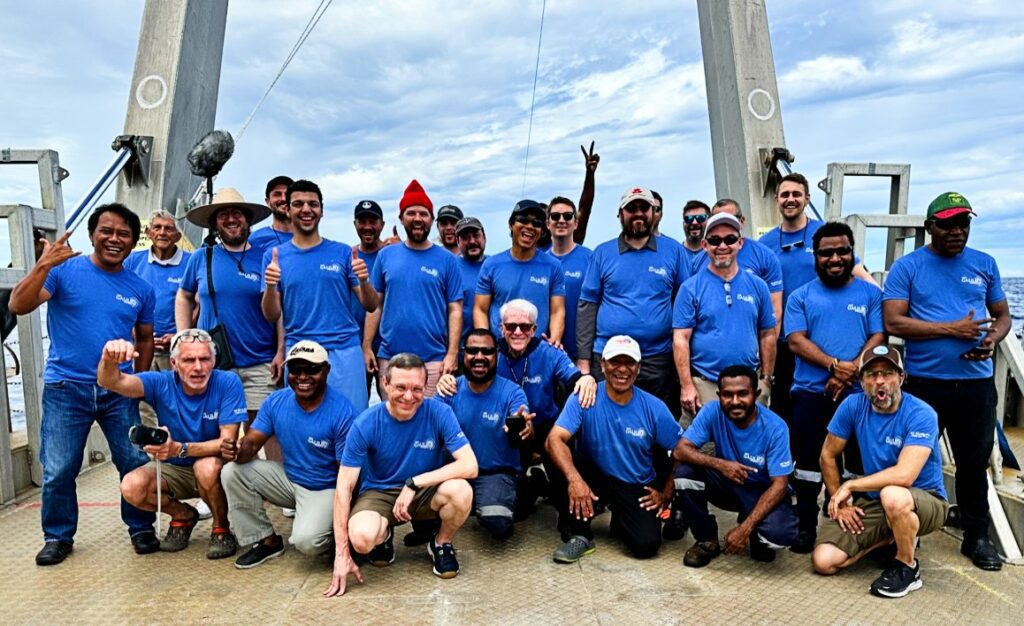A deep-ocean expedition has discovered the first-known traces of a meteorite likely to have travelled from beyond our solar system – and, making finding needles in haystacks look easy by comparison, each fragment recovered from a depth of 1.7km is less than a millimetre across.
Astrophysicist Avi Loeb’s team collected 50 tiny metallic spheres that have now been confirmed as unlike any alloys known to exist in our solar system.
To pick up these alien fragments known as “spherules” from the Pacific Ocean depths off Papua New Guinea, the Harvard University professor and Galileo Project founder deployed the world’s first “interstellar hook”, designed to attract the particles that form when meteorites or asteroids explode.
The story started in October 2017 when the cigar-shaped comet Oumuamua hit world headlines as it drifted past Earth. Loeb hailed it as the planet’s first-known interstellar visitor and his analysis brought him a best-selling book, Extraterrestrial:The First Sign Of Intelligent Life Beyond Earth, and set him hunting for other space anomalies. The nearest other solar system, Alpha Centuri, is 25 trillion miles away.

Searching through datasets he came across what came to be called Interstellar Meteor 1 (IM1), a mysterious basketball-sized object that had exploded over the Pacific on 9 January, 2014. Too small to be noticed by telescopes, its arrival had however generated a bright fireball recorded by US government sensors.
The government had shared IM1’s trajectory, speed and altitude but withheld other data in case it revealed too much about its tracking systems.
Scientists would expect interstellar meteorites to travel more rapidly than normal – and the data showed IM1 to be 95% faster. Its content also appeared to be tougher than steel, because it had not broken up in Earth’s upper atmosphere but reached the lower atmosphere.
Prof Loeb and colleague Amir Siraj wrote a paper claiming that IM1 was an interstellar visitor but it was rejected by a scientific journal for lacking detail that only the US government could provide. The US Space Force Lt-General, Department of Defence and US Space Operations Command came to the scientists’ assistance, confirming that their calculations had been accurate.
The paper has however caused controversy by suggesting that IM1 not only came from another solar system but might have been built by an alien civilisation.
The Interstellar Expedition
In mid-June Prof Loeb mounted the Interstellar Expedition, co-ordinated by expedition leader Rob McCallum of EYOS Expeditions and privately funded by US crypto entrepreneur Charles Hoskinson.
Using the PNG research ship Silver Star as its platform, the team began their search 52 miles off Manus Island, after combining US military data with local seismic readings to calculate IM1’s landing place.
They deployed the interstellar hook, a towed underwater sled, to collect samples of potential meteor debris using powerful magnets, and over two weeks covered more than 175km of search-lines.
Their first “metallic pearl” was found on 21 June, and others soon followed. They were in the 0.1-1mm size range and weighed under a milligram – and most were found along the meteorite’s calculated path.

The team now appear to have become the first humans in history to knowingly handle interstellar material. “That we were able to collect sub-millimetre spherules from the bottom of the Pacific Ocean near the fireball co-ordinates of the first recognised interstellar meteor is a testimony to the success of the scientific method,” said Prof Loeb.
Spherules can also be by-products of vehicle exhaust or brakes, welding or volcanic activity, but the team’s preliminary analysis of the composition of those found has revealed that they do not match any commonly manufactured alloys or natural meteorites from our solar system.
They consist mainly of iron but with negligible nickel content, plus trace elements, indicating a common source distinct from “control” spherules collected by the team outside the PNG search area.
’Natural or technological in origin?’
Mass spectroscopy and uranium-lead dating hint at the interstellar origin suggested by the measured IM1 velocity, say the team. “The fundamental question is whether the meteor was natural or technological in origin, given its anomalously high speed and material strength,” said Prof Loeb. “We hope to answer this question by further analysis of its isotopic composition and radioactive dating.”
He described the Interstellar Expedition as “the most thrilling experience I’ve had during my scientific career. The expedition marks the beginning of a new way of doing astronomy and studying what lies outside the solar system by using microscopes rather than telescopes.”
“Much like the discovery of the first exoplanet, the first recovery of material from an interstellar object will revolutionise our understanding of our cosmic context,” said Amir Siraj.

“Our discovery of the first interstellar meteor four years ago showed us that the cosmos is much more interconnected than we had previously imagined; now, studying its material reveals how we measure up to our neighbourhood of planetary systems.”
“The EYOS team has now planned, managed and led hundreds of expeditions of all types, and increasingly these are privately funded, science-focused initiatives,” commented Rob McCallum.
Deepwater projects EYOS Expeditions has organised include the multi-year Five Deeps Expedition, the Ring of Fire Expedition, the RMS Titanic and several extreme-depth shipwrecks, often working with deep-submersible pilot Victor Vescovo. “We enable some of the most ambitious projects on Earth – but this one is, quite literally, out of this world”.
Also on Divernet: Divers find tragic Space Shuttle wreckage, Photos from space that pointed to ‘treasure wreck’, What on Earth is next for Vescovo?, Sub struck Titanic – big deal?


It’s a shame they will have destroyed the magnetic records of these specimens https://newatlas.com/space/meteorite-hunters-magnets-test/
Perhaps one day this will be thought of as poorly as using dynamite to see if the pyramids of Ancient Egypt held treasure.
We put this point to Prof Loeb and he replied: “We do not expect our collection method to have affected the magnetic properties of the spherules.”
This is a REAL scientist, not espousing unverifiable THEORY, but ACTIVELY finding evidence. Yes CONTROVERSY is GOOD. This is WHERE ATTENTION should be heading.